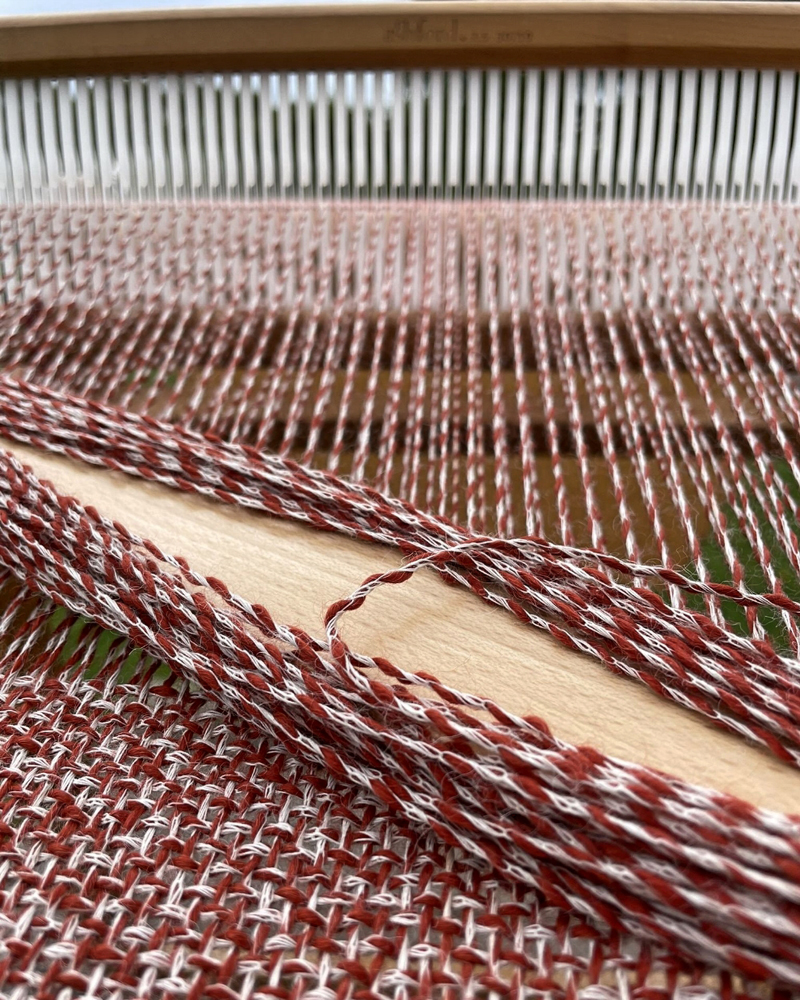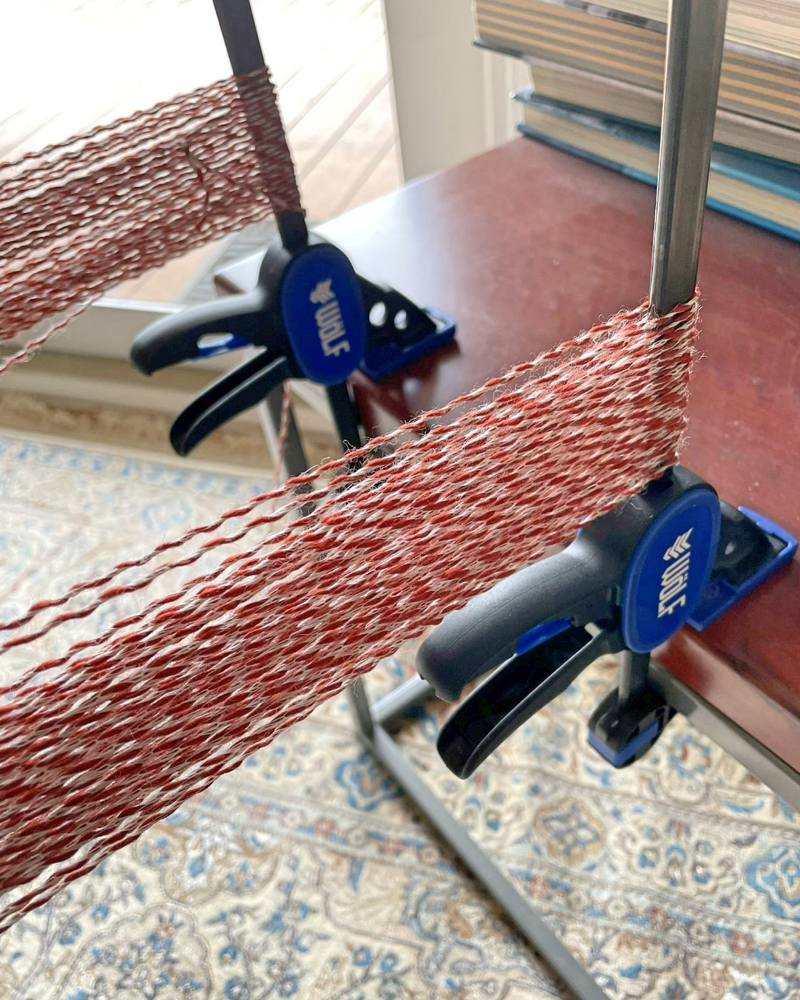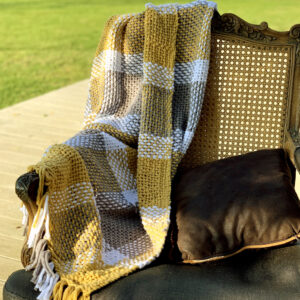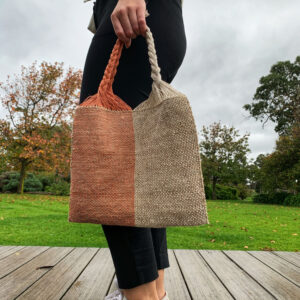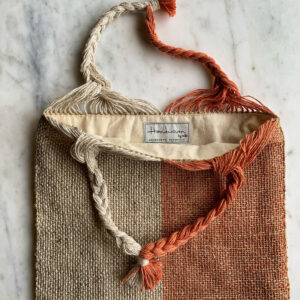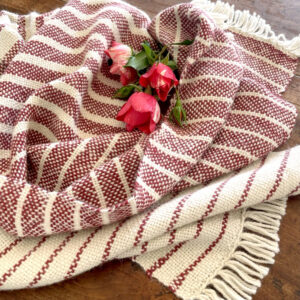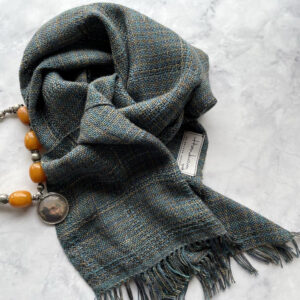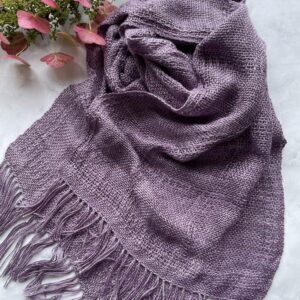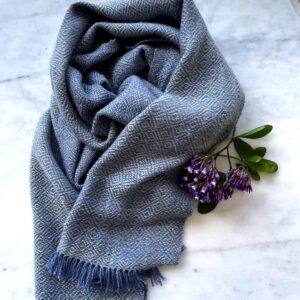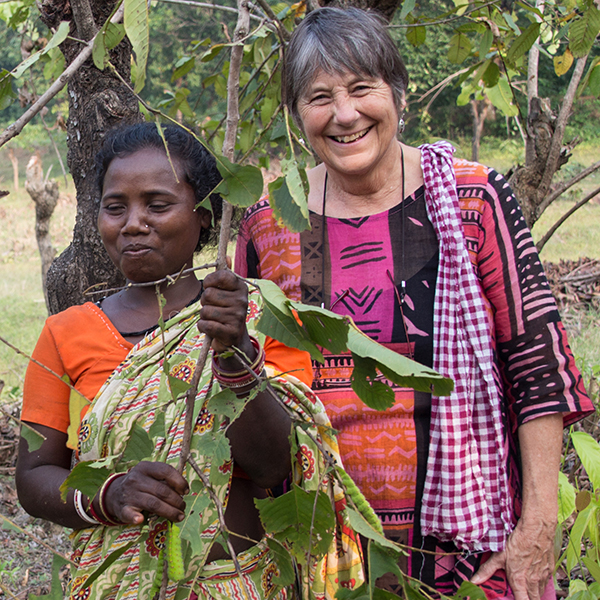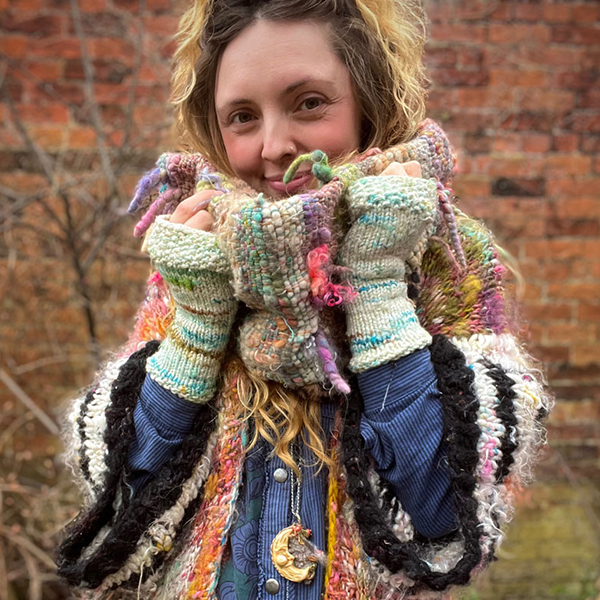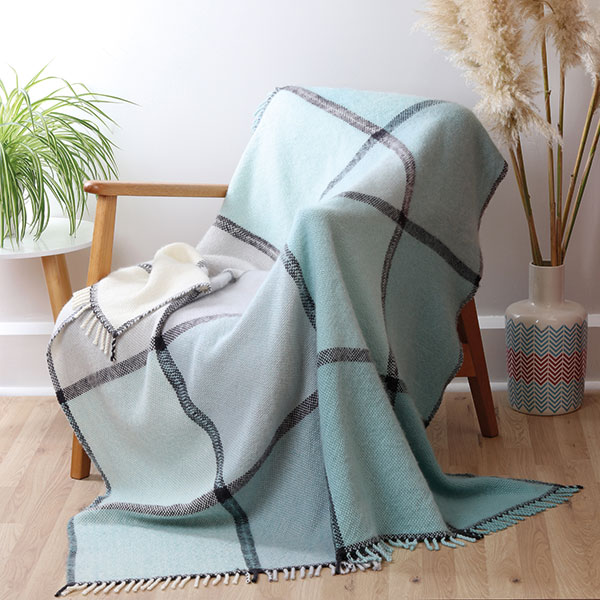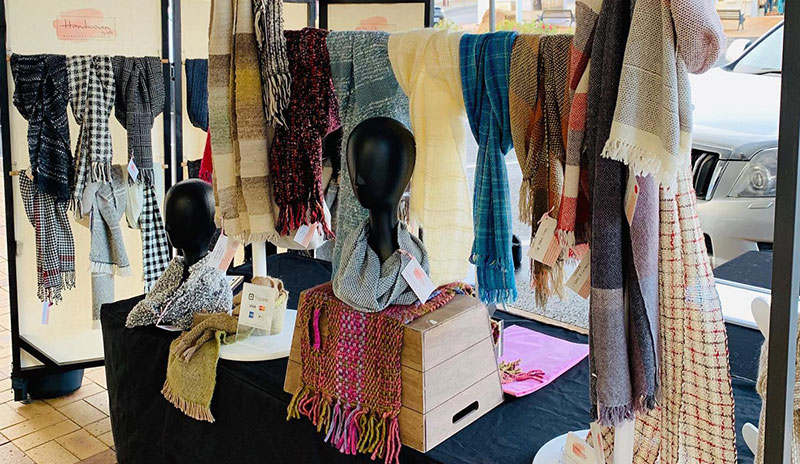
Ashford Artist of the Month – Jan 24
Inspiration on an Italian holiday was the catalyst for Annabelle’s weaving journey – drawn to the beauty created in plain weave with stunning combinations of natural fibres, colours and twist and plys. One journey opened the doors to another journey. I hope you enjoy reading her story.![]()
Kate
NAME: Annabelle Johnstone
BUSINESS NAME: Handwoven by belle
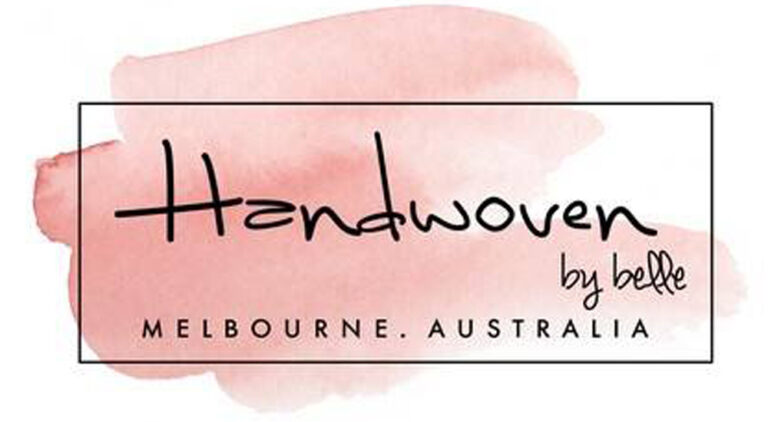
I grew up on a sheep and cattle farm in northeastern Victoria. My mum spun her own wool, knitted, crocheted, and sewed and ensured I not only learned these crafts at a young age, but also engendered in me a love of natural yarns and fibres.
After school, I lived in Melbourne, studying and later working in hospitality then marketing until I met my husband, started a family and decided to move to the outskirts of Melbourne to a 5-acre property. Although we both still worked full time in town, our boys got to grow up on a small farm, with dogs, chooks, horses – and motorbikes! The demands of work and family left little time for knitting and my sewing was reduced to taking up hems and sewing on buttons.
With family now grown, we both work from home, running a couple of small businesses and with much more time to devote to ourselves, travel, gardening, and various other hobbies.
My weaving journey began on a driving holiday through Italy in 2015. We found ourselves in the Umbrian town of Orvieto and wandered into a studio/shop where a woman was weaving and selling her beautiful scarves and wraps. The appeal to me in her work was the fabulous mix of both colours and fibres that she used in her weaving. Wools were mixed with linens, silks with mohair and with seemingly little regard to the different plys of the various yarns. I was hooked!
“I could do this” I exclaimed to my husband (cue rolled eyes) and so my weaving journey began. We bought a couple of her scarves that had been woven on a rigid heddle loom and they were to become my inspiration.
On returning home, I began researching looms and very quickly decided to purchase a 40cm Ashford rigid heddle loom. I liked the story behind the company and if I couldn’t buy anything Australian made, then New Zealand is the next best thing! At that time, there was not much in the way of lessons available, and the fabulous Kelly Casanova was only just starting up her online videos. I was pretty much on my own.
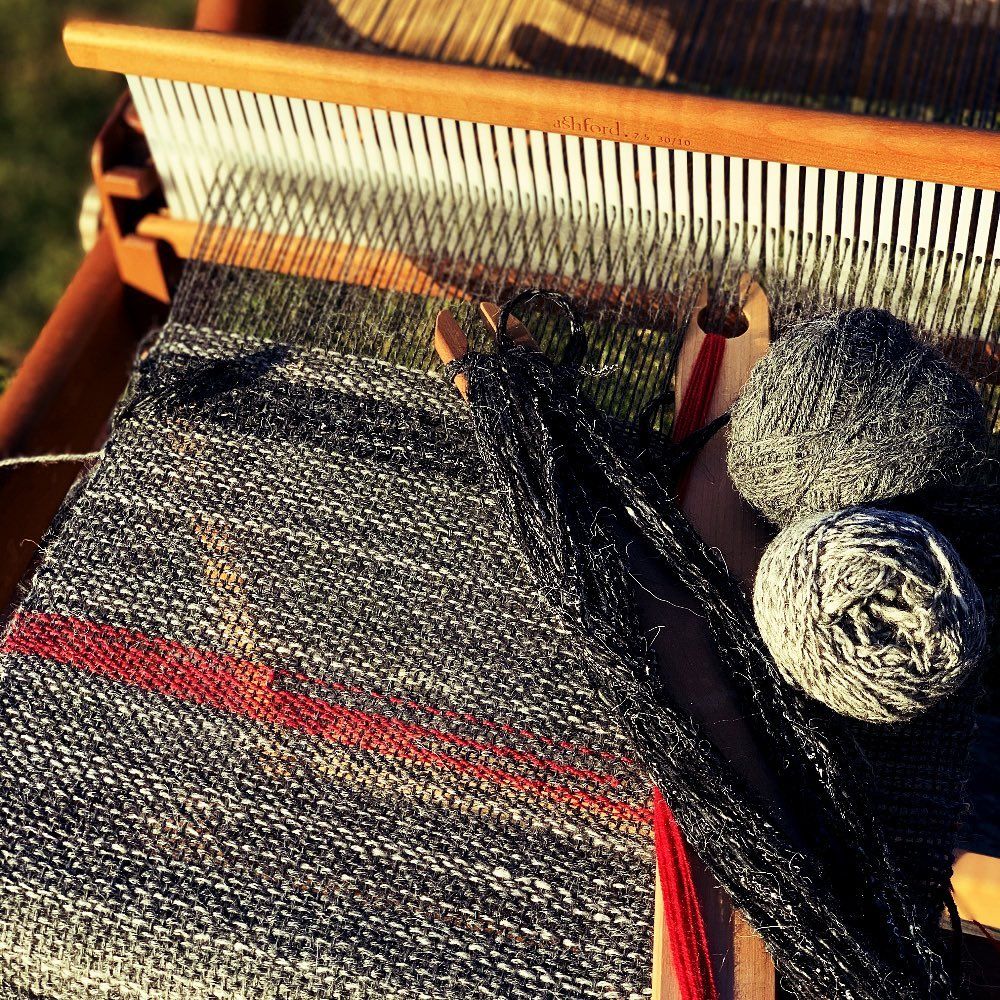
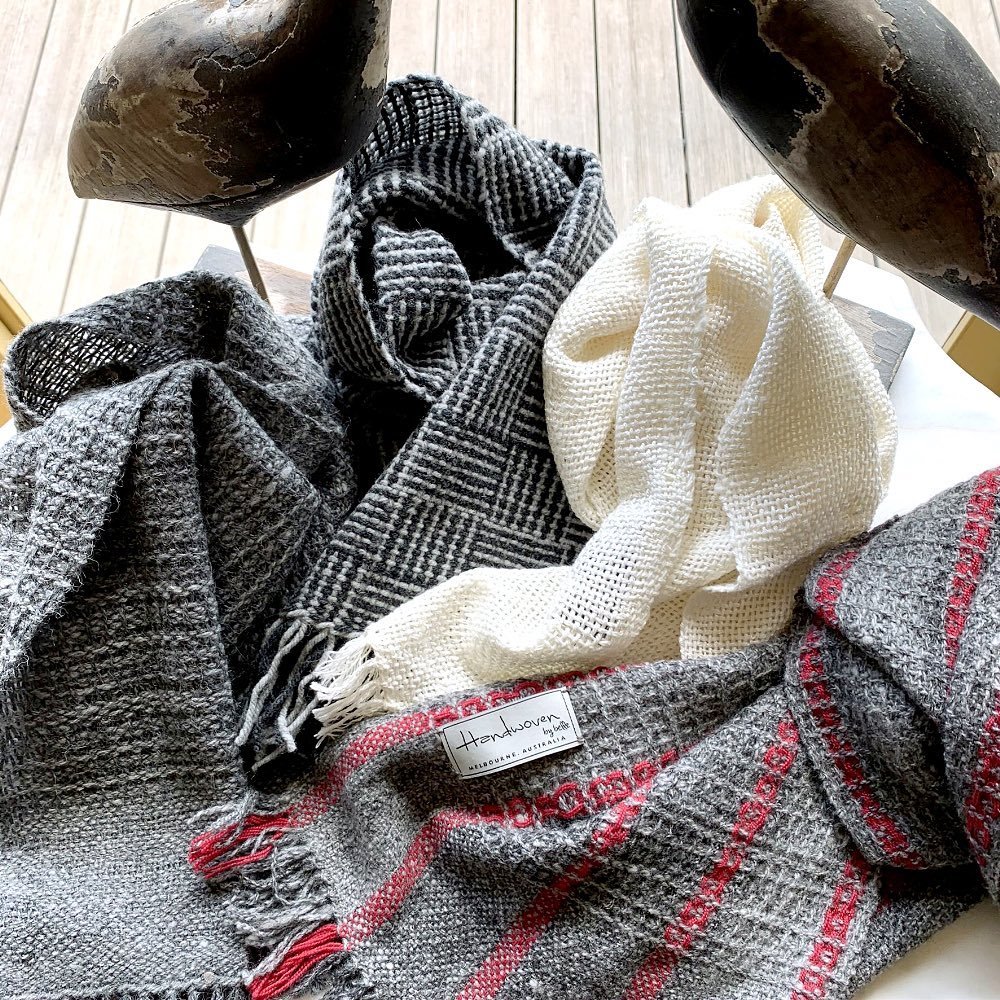
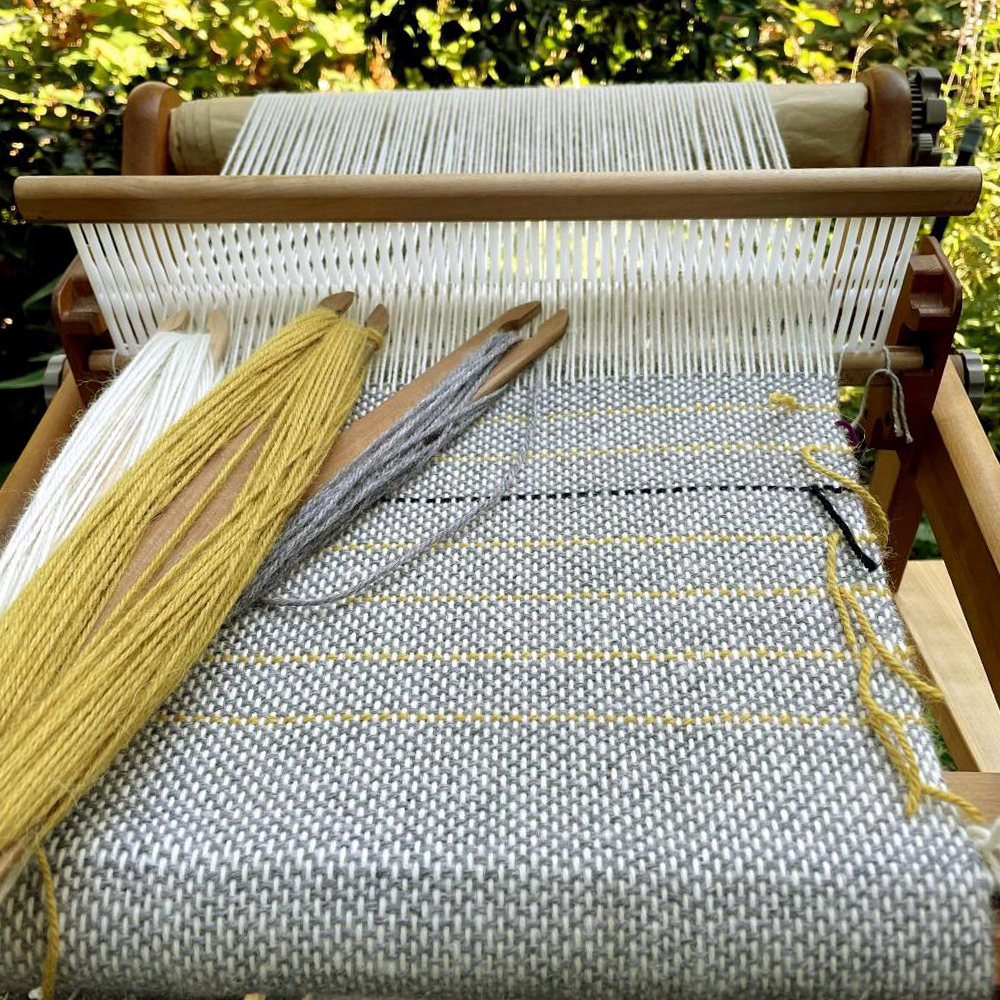
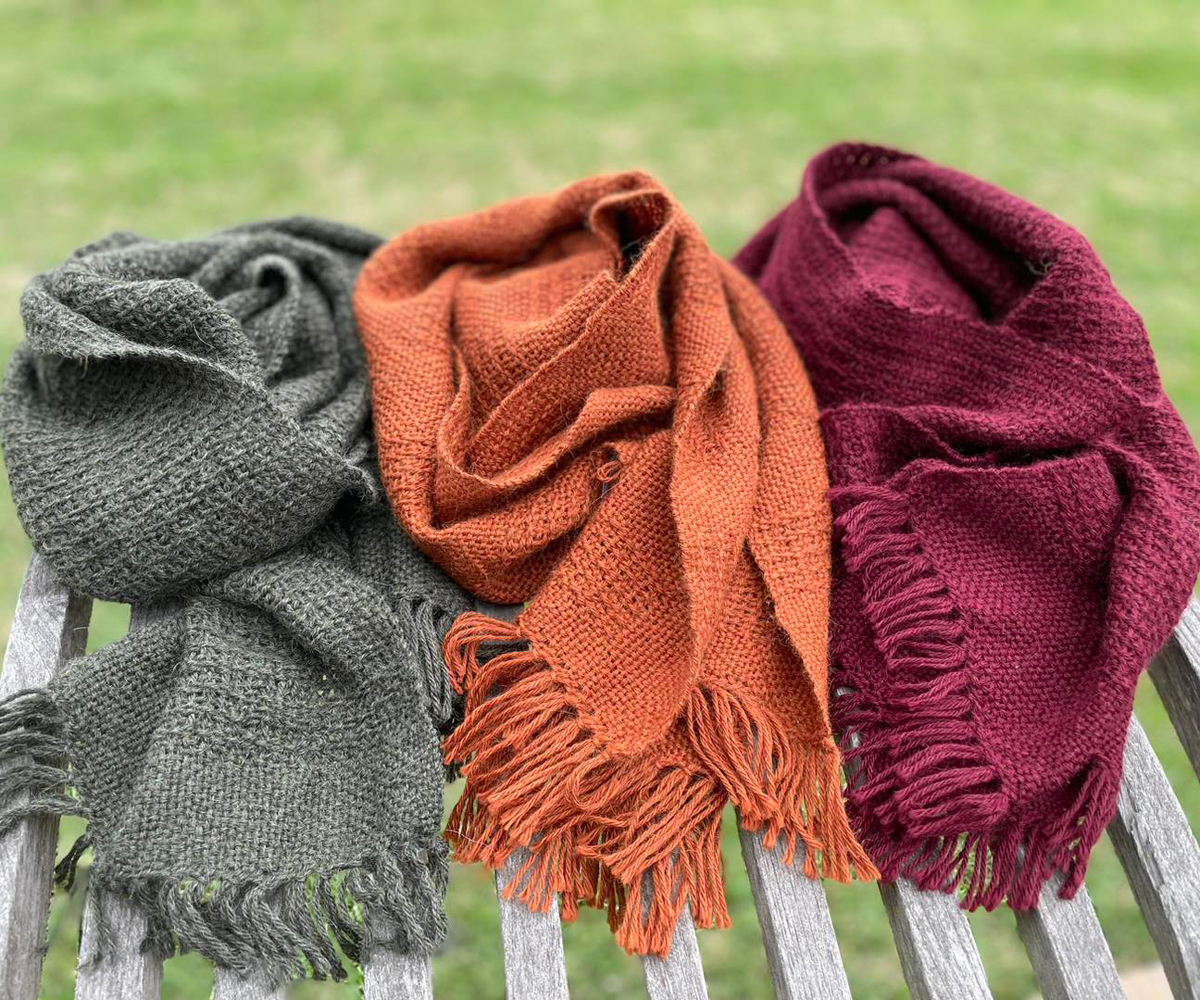
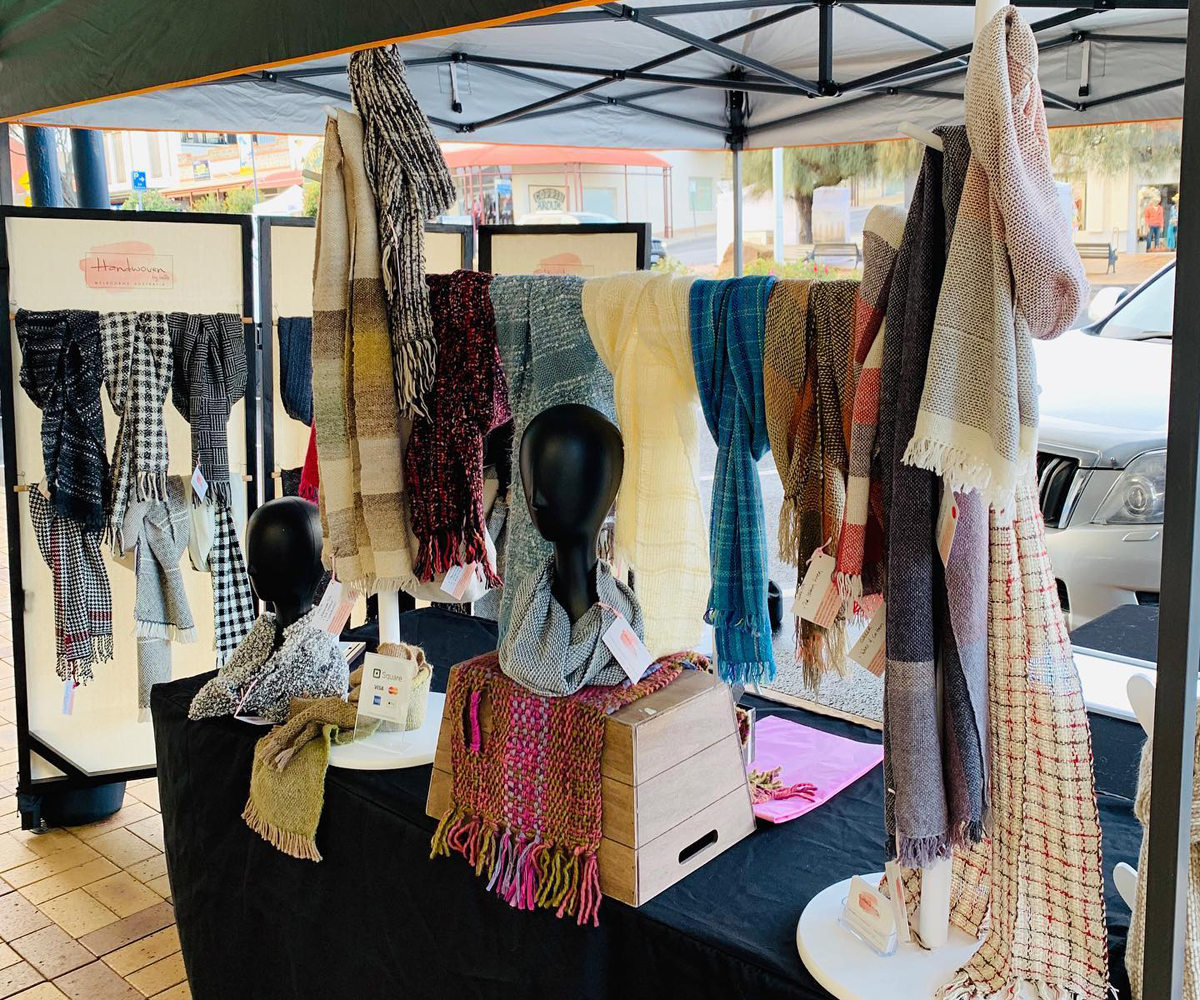
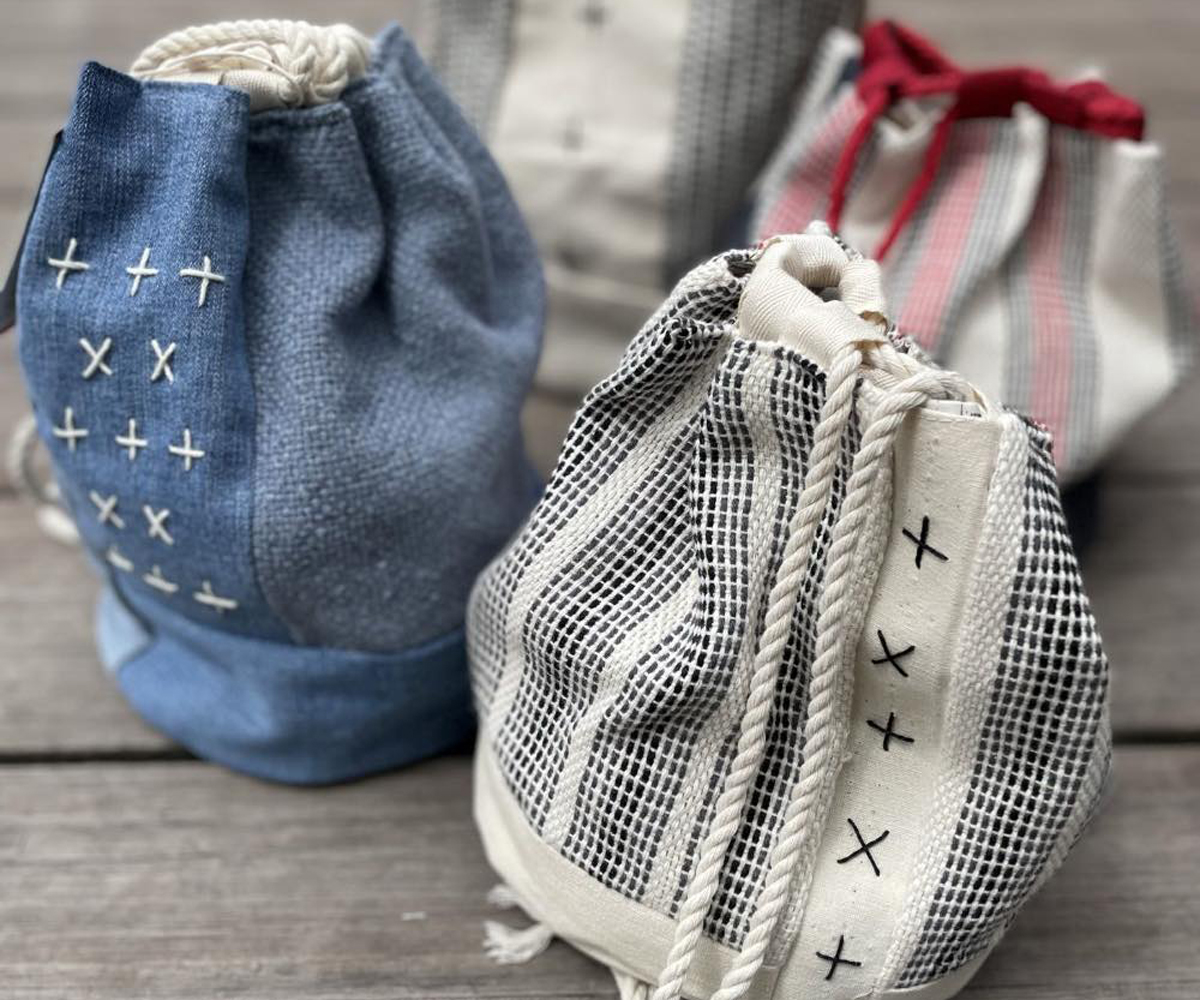
Using the instruction book that came with my loom, I warped my loom and got started. Very soon, I was trawling all the wool and yarn shops in Melbourne and online, looking for anything interesting and unusual. This soon extended to searching suppliers online and what has become annual visits to the Australian Sheep and Wool Show in Bendigo. Here, growers, spinners and dyers from all over Australia congregate to show off their wares. Not only have I found myself some great suppliers, but I enjoy catching up with them every year to see what’s new.
After a while, as the stack of scarves and shawls started to grow, my other half asked me what I was going to do with them all. “I’ll sell them at markets” I blithely said. (cue another eye roll!)
So started my market journey. It took me a lot of trial and error to find the markets that drew the type of crowds that would appreciate and pay for my work. In the beginning, I suffered a lot from imposter syndrome as I thought all the other makers and creators were so much more talented than me. I called on all my old marketing skills and designed a website as well as developing an active profile for my business on social media to help raise my profile.
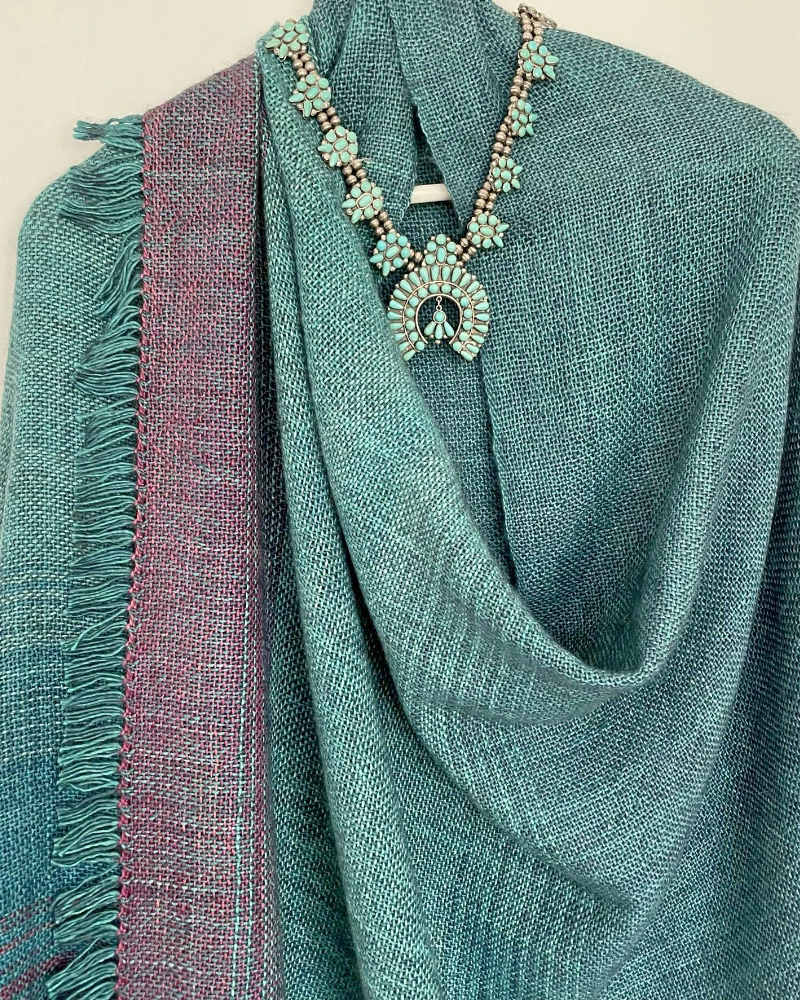
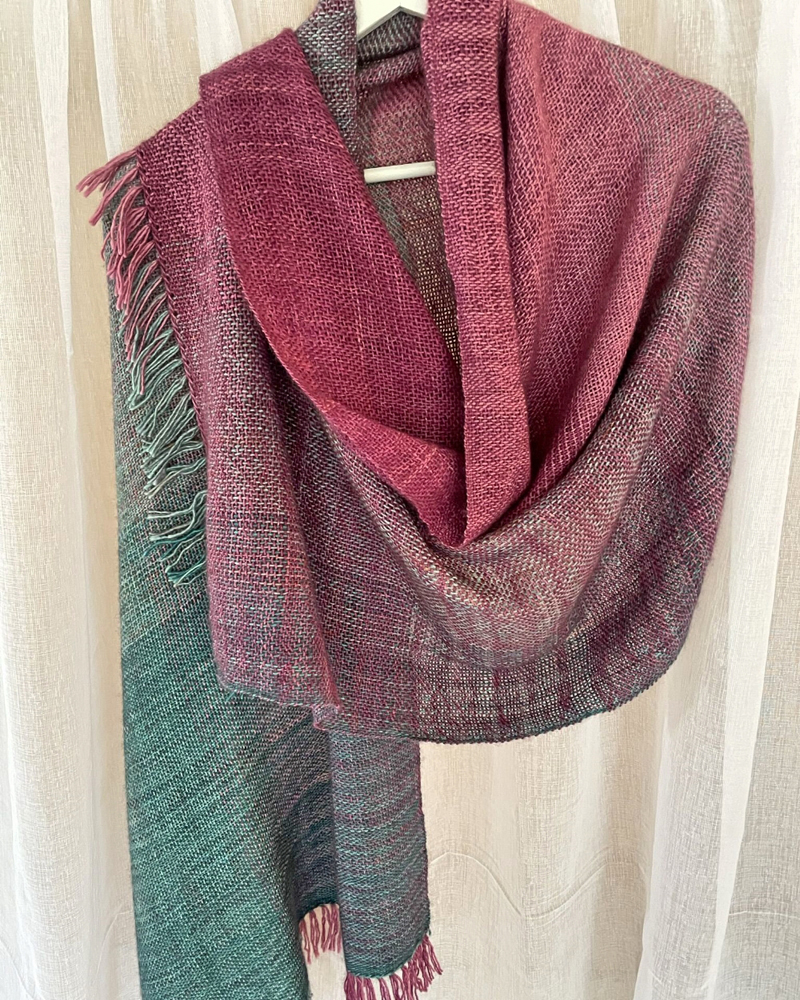
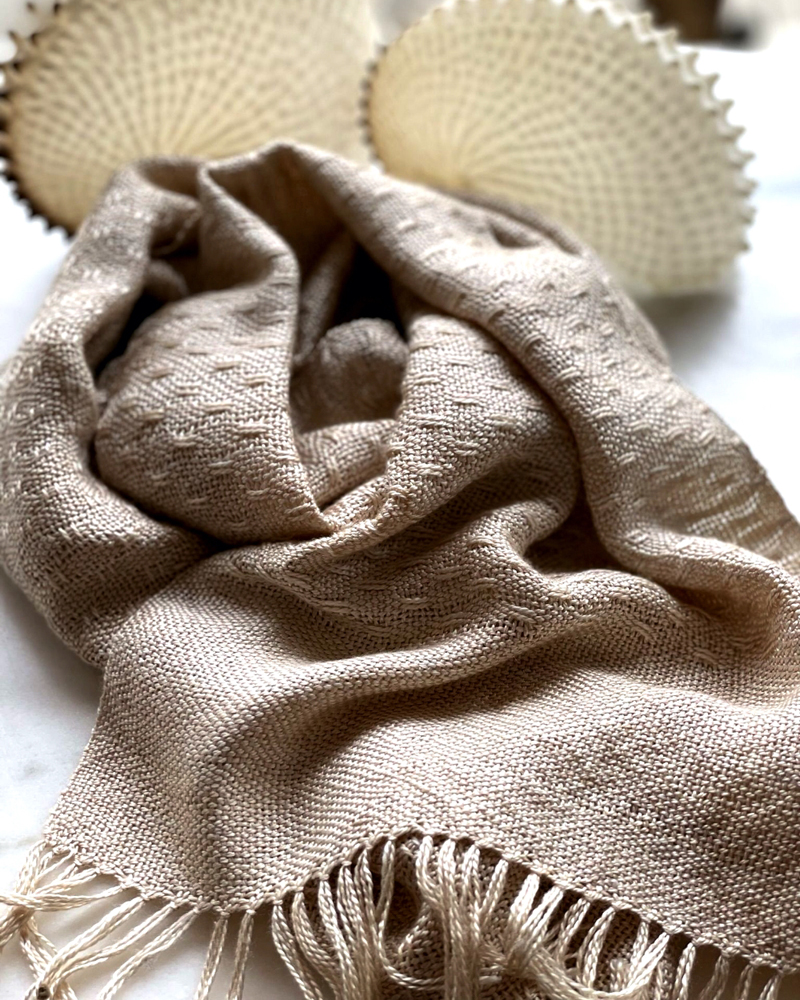
As time has gone by, I have established which markets work the best for me and now have a loyal following at these markets. I have also refined my display stand so that it is easy for me to set up and take down as well as having a clean professional look. Having an up-to-date online presence also allows these customers to purchase online as well.
Do I make money from markets? Certainly not enough to make a living, but enough to cover my costs and allow me to indulge in my passion of weaving with interesting and unusual natural yarns and fibres. It has also introduced me to a whole lot of talented people with whom I can share ideas and who give me the inspiration and encouragement to try new things.
Along my weaving journey, I’ve learned a lot.
• Due to its natural elasticity, wool is the easiest yarn to get started with and will give you the best results every time.
• How the fulling process can completely change the look of a finished piece of work – or not. I handwash everything I make then spin it off using a low-speed spin cycle. I also use the 4-minute wool cycle on my dryer which I find adds more “fullness” to woollen items.
• Just how much easier it is to have your loom on a stand. Warping is so much quicker and easier. Also, can’t imagine trying to use my 120cm loom without it.
• Replace the warping peg that comes with the loom for a bar clamp – or two. Never pulls off and attaches to any size bench, shelf, table or whatever you need to use. I also use them to clamp the warping post for my 120cm loom.
• Sandbags to hold your loom stand steady when warping. Nothing worse than ending up with one side of your warps much longer than the other because your loom became uneven.
• I’m fortunate to have a HOH (handy other half). He has made me a warping post for my 120cm loom, a warping frame as well as designing tensioning devices for both my looms. Invaluable 😊!
• Avoiding sticky yarns and learning how to work with – and love – linens and cottons. A stack of “S” hooks from the local hardware store is your lifesaver here.
• Watch your edges. I find that by holding the edge between my thumb and forefinger as I pull the warp through, I maintain an even line.
• For me, keeping a record of everything I do is vital. As I am terrible at following patterns, most of my work is inspired by the yarns and designed as I go. I measure my work as I weave, using a knitters row marker (the little pigtail ones) every 20cm and write the length on the craft paper rolls I use around my beam. Sometimes I take a photo at the beginning to ensure that I finish the same way so both ends of the project are the same.
